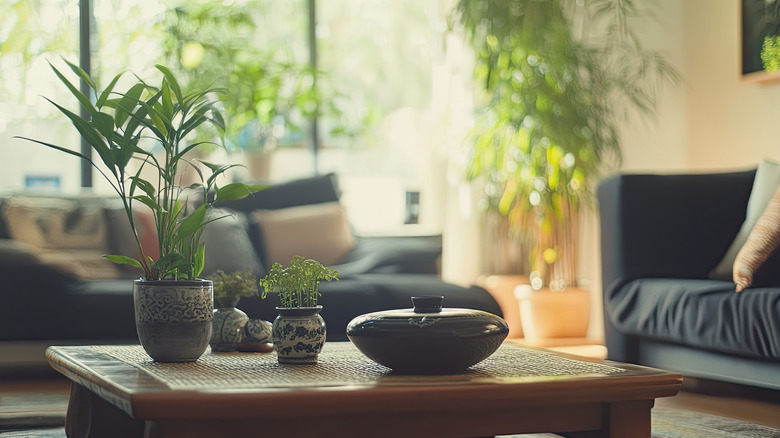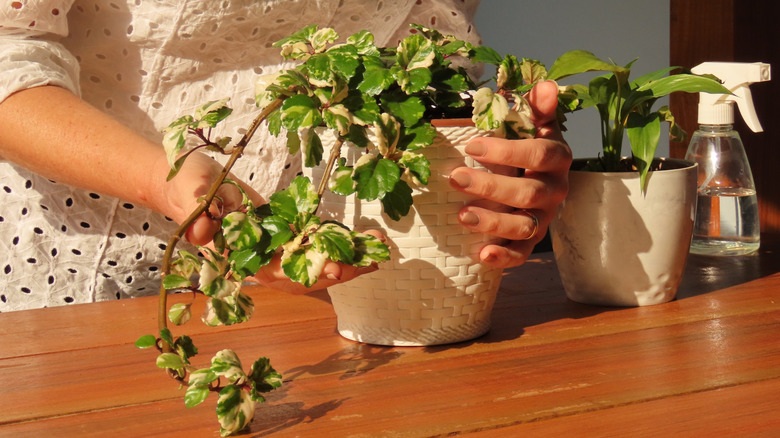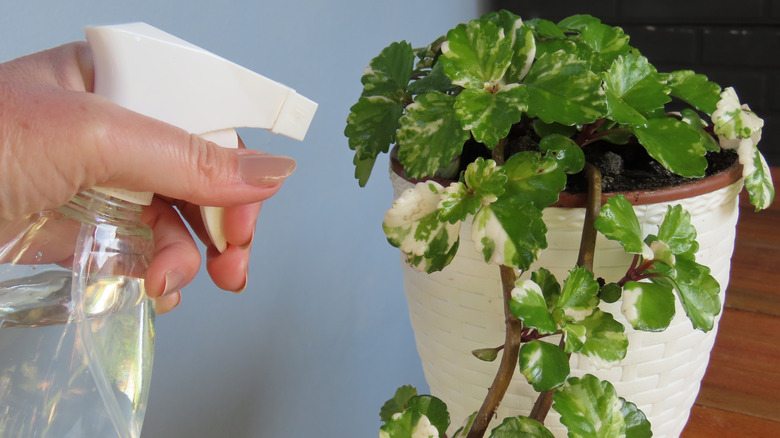The Beautiful Fall Plant That Attracts Abundance In Your Home According To Feng Shui
As the weather gets cooler and fall progresses, avid gardeners start to look at increasing their houseplant collection. So, if you're in the market for a few new plants, why not consider one that may also attract abundance, according to the ancient practice of Feng Shui. If you want a house that flows well, and provides a feeling of harmony and balance, it's worth understanding the various elements and how to arrange them, according to this popular art. However, grasping the concept of Feng Shui and how to implement it in your home isn't always the easiest thing to do. In fact, you may be participating in this practice without even knowing you are doing it, as many plants are associated with positive Feng Shui. While you have a plethora of flora you can choose from, if you're looking for abundance and peace, then there is one fall plant you should consider putting in your home.
It's known as Swedish ivy (Plectranthus spp.). Despite its common name, it's not actually an ivy. Instead, it's closely related to mint and sage. It is also sometimes called Swedish begonia, creeping Charlie, and whorled Plectranthus. It's a vining plant with rich green leaves that may be purple underneath and white on the edges. The leaves are also serrated. Though it vines, it doesn't really attach to anything, unlike actual ivy. There are also a few varieties that provide different leaf and stem colors. When Swedish ivy flowers, it grows small white or purple ones. They show up somewhat randomly, but are more common in spring and fall.
The Feng Shui of Swedish ivy
When it comes to Feng Shui, this plant is often associated with both wealth and abundance. Therefore, it's best positioned in the southeast or wealth corner of your home. You should avoid areas dominated by metal and fire, as Swedish ivy can conflict with these two because it's regarded as a wood element. This particular element usually symbolizes growth, emotional balance, and renewal. The vines further add to its Feng Shui appeal, improving the positive energy flow as well as strengthening bonds. This also ties it to growing and building friendships and generosity.
According to the ancient Chinese practice, Swedish ivy should not be placed in areas with low energy, such as bathrooms, which may negatively affect the benefits it provides. Apart from the plant's supposed ability to attract abundance, there are additional perks as well, including air purification and natural beauty. It's important to understand where to place the Feng Shui elements in your home, as putting them in the wrong area could lead to negative or decreased effects. For example, it's recommended to keep the plant away from doors, as the trailing vines create a barrier, physically and figuratively, that keeps people at arm's length from you. If you enjoy this plant, but don't want it inside, Swedish Ivy also works well on your patio or a shaded spot in your backyard. This still allows you to enjoy the beauty and charm of the plant.
What to know about caring for Swedish ivy
Swedish ivy is easy to care for, and an ideal plant for both experts and beginners. It can handle a wide range of sunlight, soil, and water conditions. However, it prefers a lot of bright light, so it does quite well when placed near a southern window, as Feng Shui design suggests. The ideal environment is a room that has average humidity, around 30 to 50 percent, and temperatures between 60 and 75 degrees Fahrenheit. This plant is not very cold-tolerant, and doesn't handle temperatures much below 40 degrees. It may require a little fertilizer in the spring and summer during the growing season, but doesn't need a lot. Swedish ivy is an easy-to-care-for plant that houseplant enthusiasts will find durable and long-lasting. So much so, that it is the dependable houseplant that's been in the White House since 1961.
If you're in the right zone, it also makes a great ground cover, as long as it isn't in direct sun, which can burn the leaves. However, it's really only hardy in USDA zones 10 and 11, so it doesn't work for most of the United States. In some cooler zones, it may be an acceptable annual plant. It's also the perfect plant for hanging baskets, which makes for a beautiful and cozy cottage decoration. In fact, many people feel that it looks better hanging than it does in a regular planter.


